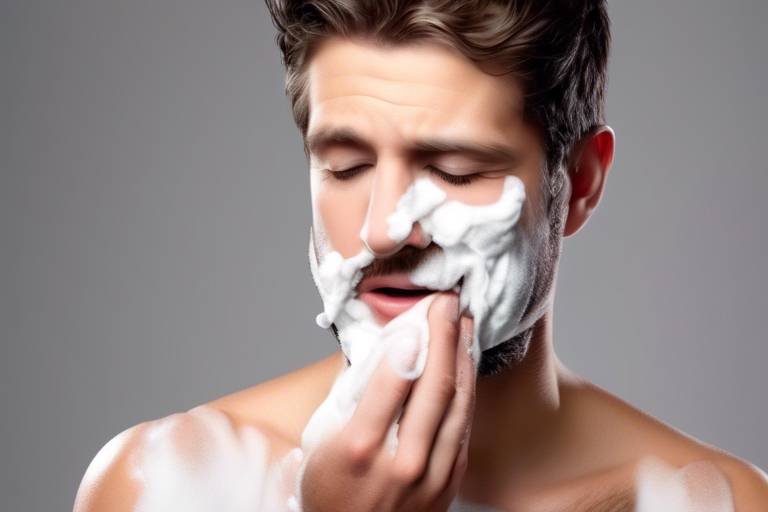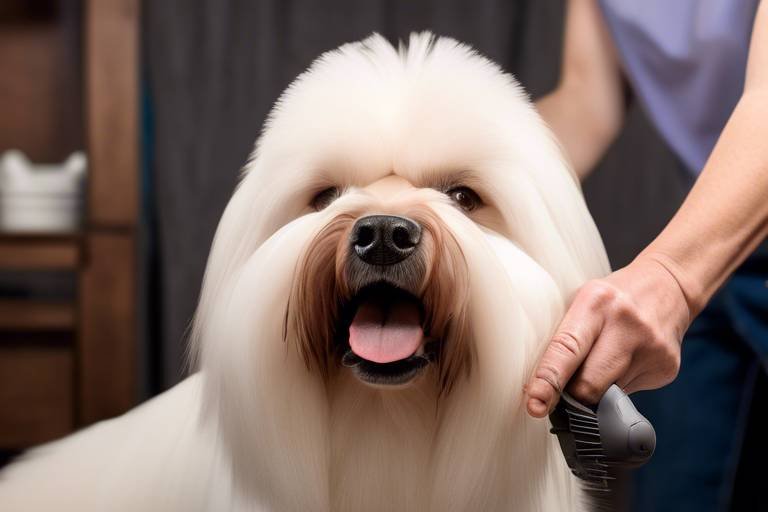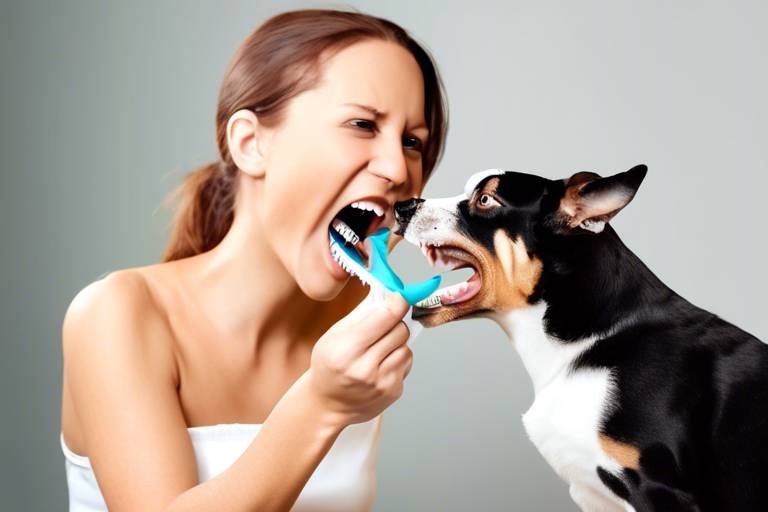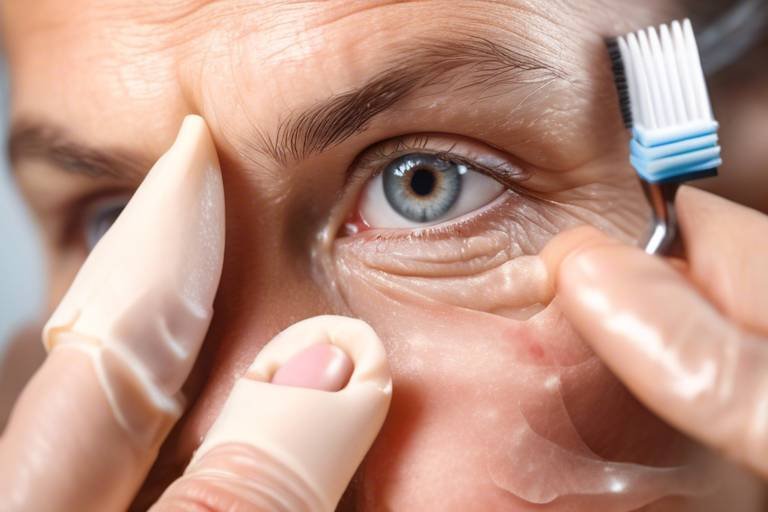How Often Should You Bathe Your Pet?
When it comes to our furry companions, one of the most common questions pet owners ask is, “How often should I bathe my pet?” This question doesn’t have a one-size-fits-all answer, as it largely depends on various factors including your pet’s breed, coat type, lifestyle, and even their individual health. Just like us, pets can have different needs based on their environment and daily activities. Therefore, understanding your pet's specific requirements is crucial for maintaining their hygiene and overall well-being.
For instance, a playful puppy who loves to roll around in the mud will likely need more frequent baths than a senior cat who prefers lounging indoors. Similarly, certain breeds may require more regular grooming due to their coat type. This means that pet owners need to adopt a flexible approach when it comes to bathing schedules. In this article, we will dive into the factors that influence how often you should bathe your pet, helping you create a bathing routine that suits their unique needs.
Ultimately, the goal is to keep your pet clean, comfortable, and happy. Regular baths not only help in maintaining hygiene but can also be a wonderful bonding experience between you and your furry friend. So, let’s explore the various aspects that determine the right bathing frequency for your pet, ensuring they stay fresh and healthy!

Understanding Your Pet's Needs
When it comes to our furry companions, understanding their unique bathing needs is crucial for their overall health and happiness. Just as every human has different hygiene preferences, pets also exhibit individual requirements based on their breed, coat type, and skin conditions. For instance, a Golden Retriever and a Sphynx cat have vastly different grooming needs. While the Golden Retriever may thrive with a good bath every few weeks to keep its thick coat clean and free from mats, the Sphynx, being hairless, might only need a bath occasionally to remove excess oils from its skin.
Moreover, the coat type plays a significant role in determining how often you should wash your pet. Long-haired breeds, like Persian cats or Yorkshire Terriers, typically require more frequent grooming and bathing to prevent tangles and matting. On the other hand, short-haired breeds, such as Beagles or Boxers, may not need baths as often, but they still benefit from regular cleaning to keep their skin healthy and to minimize shedding.
Additionally, pets with specific skin conditions may require tailored bathing routines. For example, dogs with allergies or sensitive skin may need special shampoos that are gentle and free from harsh chemicals. Understanding these factors can help pet owners establish a bathing routine that not only keeps their pets clean but also promotes their skin health.
To summarize, here are some key points to consider when assessing your pet's bathing needs:
- Breed: Different breeds have varying requirements.
- Coat Type: Long-haired pets may need more frequent baths.
- Skin Conditions: Pets with skin issues may need special care.
By recognizing these individual needs, you can create a bathing schedule that works for your pet, ensuring they remain comfortable, clean, and healthy. Remember, a happy pet is often a clean pet!

Factors Influencing Bathing Frequency
When it comes to bathing your pet, it's not a one-size-fits-all situation. The frequency of baths can vary significantly based on several factors that are unique to your furry friend. Understanding these factors is essential for ensuring that your pet remains clean, comfortable, and healthy. First and foremost, consider your pet's activity level. An active dog that loves to roll in the mud or play in the water may need more frequent baths compared to a laid-back couch potato. Just like us, pets can get dirty, and their lifestyle often dictates how often they need a good scrub.
Next, think about the environment your pet lives in. If your pet spends a lot of time outdoors, they’re likely to pick up dirt, pollen, and other allergens that can necessitate more frequent bathing. On the flip side, indoor pets might not require as many baths, but they still benefit from occasional cleaning to remove dust and dander. Additionally, pets with skin sensitivities or underlying health issues may need specialized care when it comes to bathing frequency. For instance, if your pet has a skin condition, bathing too often can exacerbate the issue, while not bathing enough can lead to discomfort and infections.
Another critical aspect to consider is the coat type. Long-haired breeds often require more grooming and bathing to prevent matting and tangling, while short-haired pets may only need a bath every few weeks. That said, even short-haired pets can develop skin problems if they’re not bathed regularly. It’s essential to strike a balance—too much bathing can strip the natural oils from their skin, while too little can lead to a buildup of dirt and allergens.
Lastly, the season can also play a role in how often you should bathe your pet. For example, during shedding season, you might find that your pet needs more frequent baths to help manage loose fur and dander. In contrast, winter months may require fewer baths due to the cold weather, which can dry out their skin. Overall, keeping an eye on these factors will help you create a tailored bathing schedule that meets your pet’s unique needs.
- How often should I bathe my dog? It depends on their breed, activity level, and skin health. Generally, every 4-6 weeks is a good rule of thumb.
- Can I use human shampoo on my pet? No, human shampoo can irritate your pet's skin. Always use products specifically designed for pets.
- What if my pet has skin issues? Consult your veterinarian for a bathing schedule and recommended products tailored to your pet's specific needs.
- Is it bad to bathe my pet too often? Yes, over-bathing can strip away natural oils and lead to skin irritation. Balance is key!
Breed-Specific Considerations
When it comes to bathing your pet, play a significant role in determining how often they need a wash. Different breeds come with their own unique characteristics and needs that can greatly influence their bathing frequency. For instance, breeds with long, flowing coats, like the Golden Retriever or Yorkshire Terrier, often require more frequent baths to prevent tangles and matting. Without regular bathing and grooming, their fur can become a tangled mess, leading to discomfort and skin issues.
On the other hand, short-haired breeds, such as Beagles or Boxers, typically require less frequent baths. However, that doesn’t mean they should be neglected! Even short-haired pets can accumulate dirt and odors, especially if they enjoy rolling in the grass or mud. It’s essential to strike a balance based on your pet's lifestyle and individual needs.
Moreover, some breeds are prone to specific skin conditions that may require special attention. For example, Bulldogs and Pugs are known for their sensitive skin and can develop issues like eczema or allergic reactions. Bathing them with a gentle, hypoallergenic shampoo can help soothe their skin and keep it healthy. In contrast, breeds like Shih Tzus may need regular baths to maintain the health of their long, luxurious coats, which can trap dirt and oils if not cleaned properly.
Here’s a quick overview of some common breeds and their bathing needs:
| Breed | Coat Type | Bathing Frequency |
|---|---|---|
| Golden Retriever | Long-haired | Every 4-6 weeks |
| Beagle | Short-haired | Every 8-12 weeks |
| Bulldog | Short-haired | Every 4-6 weeks |
| Shih Tzu | Long-haired | Every 3-4 weeks |
| Yorkshire Terrier | Long-haired | Every 4-6 weeks |
In summary, understanding your pet's breed and its specific grooming needs is crucial for maintaining their hygiene and overall health. Regular baths, combined with proper grooming, can significantly impact their comfort and well-being. So, whether you have a fluffy companion or a sleek buddy, tailor your bathing routine to fit their unique characteristics!
- How often should I bathe my dog? It depends on the breed and lifestyle, but generally, every 4-8 weeks is a good rule of thumb.
- Can I use human shampoo on my pet? No, human shampoos can be too harsh for pets. Always choose a shampoo specifically formulated for animals.
- What signs indicate my pet needs a bath? Look out for odors, visible dirt, or skin irritations. If your pet smells or looks dirty, it's time for a wash!
Long-Haired vs. Short-Haired Pets
When it comes to bathing your furry companions, the type of coat they have plays a significant role in determining how often they should be bathed. Long-haired pets, such as Persian cats or Golden Retrievers, typically require more frequent grooming and bathing compared to their short-haired counterparts like Beagles or Boxers. Why is that? Well, long hair can easily trap dirt, debris, and oils, leading to a less-than-pleasant odor and potential skin issues if not addressed regularly.
For long-haired pets, a bathing routine that includes weekly to bi-weekly baths is often recommended. This helps to prevent matting, which can be a real pain—not just for the pet but for you as well! Additionally, regular baths help to keep their skin healthy and free from irritants. However, it’s essential to use a gentle, moisturizing shampoo designed specifically for long-haired breeds. This ensures their coat remains soft and manageable.
On the flip side, short-haired pets generally require less frequent baths—think of bathing them every three to six weeks. Their sleek coats do not trap dirt and oils as easily, allowing for a more extended period between baths. However, they still benefit from regular grooming sessions to remove loose fur and dander. For instance, a quick brush once a week can help minimize shedding and keep their coat shiny and healthy.
It's also worth mentioning that some short-haired breeds, like Dalmatian or Chihuahua, can sometimes have skin sensitivities, which means their bathing routine might need to be adjusted based on their specific needs. For these pets, using a hypoallergenic shampoo can be beneficial to avoid skin irritation.
Ultimately, the decision on how often to bathe your pet should be tailored to their individual needs, considering factors such as their coat type, activity level, and any underlying skin conditions. Just remember, whether your pet has long hair or short hair, regular grooming and bathing are essential for keeping them clean, comfortable, and healthy!
- How often should I bathe my long-haired pet?
Long-haired pets typically need baths every week to bi-weekly to prevent matting and maintain skin health. - Can I bathe my short-haired pet less frequently?
Yes! Short-haired pets usually require baths every three to six weeks, but regular grooming is still important. - What type of shampoo should I use?
Always opt for a shampoo that is suited to your pet's coat type and skin sensitivity. Hypoallergenic options are great for sensitive skin. - Is it okay to bathe my pet too often?
Yes, bathing your pet too frequently can strip their coat of natural oils and lead to skin issues. Always tailor the bathing schedule to your pet's needs.
Hypoallergenic Breeds
When it comes to , many pet owners often wonder about the best bathing practices to keep their furry friends happy and healthy. Hypoallergenic pets, such as Poodles, Bichon Frises, and Maltese, are known for producing fewer allergens compared to other breeds. However, this doesn't mean they are entirely free from allergens; they still require regular grooming and bathing to minimize dander and maintain their coat's health. The key is to find a balance that ensures their skin remains clean and irritation-free.
It's essential to understand that hypoallergenic breeds often have different skin sensitivities. For instance, their skin may react negatively to harsh chemicals found in many grooming products. Therefore, when selecting shampoos and conditioners, pet owners should opt for gentle, hypoallergenic formulas that are free from sulfates and artificial fragrances. This choice not only helps in maintaining the coat but also reduces the risk of skin irritations that could lead to discomfort.
Another important aspect to consider is the bathing frequency. While some hypoallergenic breeds may only need a bath every few weeks, others might require more frequent cleansing, especially if they are active or spend time outdoors. Regular grooming, including brushing, can also help to control shedding and dander, further minimizing allergens in the home. Here’s a quick look at some common hypoallergenic breeds and their recommended grooming routines:
| Breed | Recommended Bathing Frequency | Grooming Needs |
|---|---|---|
| Poodle | Every 4-6 weeks | Regular brushing to prevent matting |
| Bichon Frise | Every 4 weeks | Daily brushing to maintain coat |
| Maltese | Every 4-6 weeks | Daily brushing recommended |
In conclusion, while hypoallergenic breeds may be a suitable choice for allergy sufferers, they still require diligent care. By understanding their specific needs and maintaining a consistent grooming and bathing routine, you can help your pet thrive while ensuring your home remains a comfortable environment for everyone.
- How often should I bathe my hypoallergenic dog? It typically depends on the breed and their activity level, but every 4-6 weeks is a good general guideline.
- Can I use regular dog shampoo on hypoallergenic breeds? No, it’s best to use hypoallergenic shampoos that are specifically formulated for sensitive skin to avoid irritation.
- What are the signs that my pet needs a bath? Look for odor, visible dirt, or skin irritations as indicators that your pet may need a bath.
Environmental Impact
When it comes to determining how often you should bathe your pet, the environment plays a significant role. The surroundings in which your furry friend lives can greatly influence their hygiene needs. For instance, pets that spend most of their time outdoors are likely to encounter dirt, mud, and various allergens. This exposure can lead to an increased necessity for bathing compared to indoor pets, who may not have the same level of exposure to environmental elements.
Let’s consider a few scenarios:
- Outdoor Adventures: If your pet enjoys romping around in the backyard or taking long walks in the park, they are bound to get dirty. In such cases, you might find yourself needing to bathe them more frequently to keep their coat clean and free from debris.
- Allergy-Prone Environments: If you live in an area with high pollen counts or dust, your pet may pick up allergens that can irritate their skin. Bathing them regularly can help minimize these irritants and keep their skin healthy.
- Urban Living: Pets living in urban areas may encounter more pollutants and grime. Regular baths can help remove these contaminants, contributing to their overall health.
Moreover, the type of surfaces your pet frequents can also affect their bathing schedule. For example, pets that often walk on grassy areas may pick up ticks or fleas, necessitating more frequent baths to ensure they are free from pests. On the other hand, pets that primarily stay indoors might require fewer baths, but they still need regular grooming to prevent matting and maintain a healthy coat.
In conclusion, understanding the environmental factors that impact your pet's bathing needs is essential. Regularly assessing their surroundings and adjusting their bathing schedule accordingly can help maintain their hygiene and comfort. So, whether your pet is a mud-loving adventurer or a couch potato, be sure to tailor their bathing routine to fit their lifestyle!
- How can I tell if my pet needs a bath? Look for signs like odor, visible dirt, or excessive shedding. If your pet's coat feels greasy or they have skin irritations, it might be time for a wash.
- What products should I use to bathe my pet? Choose shampoos and conditioners that are specifically formulated for pets, considering their skin sensitivity and coat type. Avoid human products, as they can be too harsh for your furry friend.
- How often should I bathe my pet? It varies by pet. Generally, dogs may need a bath every 4 to 6 weeks, while cats might require less frequent bathing. However, adjust based on their activity level and environment.

Signs Your Pet Needs a Bath
As a responsible pet owner, it's essential to recognize the signs that indicate your furry friend is in need of a bath. After all, a clean pet is a happy pet! One of the most obvious signs is odor. If your pet starts to develop an unpleasant smell, it’s a clear signal that it’s time for a wash. Think of it this way: just like we feel fresh and revitalized after a shower, your pet will feel the same after a good bath.
Another indicator that your pet needs some sudsy love is visible dirt and debris in their coat. If you notice mud, leaves, or any other grime stuck in their fur, it’s time to grab the shampoo. Regular grooming can help, but sometimes a thorough bath is necessary to keep their coat clean and healthy.
Don't forget to pay attention to your pet's skin health. If you observe any signs of irritation, such as itching, redness, or flakiness, it may be time for a bath. These symptoms can indicate that your pet has accumulated allergens or dirt that could lead to more significant skin issues if left untreated. Think of bathing as a preventive measure, much like washing your hands to avoid getting sick.
In addition to these signs, it's crucial to monitor your pet's shedding. While shedding is a natural process, excessive shedding can be a sign that your pet needs a bath. A good wash can help remove loose fur and dander, making your home a cleaner place and reducing allergens in the air. It's like a mini spa day that benefits both your pet and your household!
To summarize, here are some key signs that your pet might need a bath:
- Unpleasant odor
- Visible dirt and debris
- Skin irritation or redness
- Excessive shedding
By keeping an eye out for these signs, you can ensure your pet remains clean and comfortable. Regular baths not only enhance their appearance but also contribute to their overall health. Just remember, the goal is to create a positive bathing experience, so make it fun with treats and plenty of praise!
Q: How often should I bathe my pet?
A: The frequency of bathing depends on several factors, including your pet's breed, coat type, and lifestyle. Generally, dogs may require baths every 4 to 6 weeks, while cats may need less frequent bathing.
Q: Can I use human shampoo on my pet?
A: It's best to avoid using human shampoo on pets, as their skin has a different pH level. Always opt for pet-specific shampoos to ensure their skin remains healthy.
Q: What should I do if my pet hates baths?
A: If your pet dislikes baths, try to make the experience more enjoyable by using treats, toys, and gentle handling. Gradual exposure and positive reinforcement can help them become more comfortable with bathing.
Q: Are there any signs that indicate I should not bathe my pet?
A: If your pet has open wounds, severe skin infections, or is feeling unwell, it’s best to consult your veterinarian before bathing them.
Odor and Dirt Detection
As a pet owner, you might find yourself asking, "When is it time for my furry friend to hit the bath?" One of the most telling signs that your pet is overdue for a wash is the presence of odor. If your beloved companion starts to emit a smell that can only be described as "doggy" or "catty," it's a clear indicator that they need a bath. This unpleasant scent often arises from the natural oils in their skin, which can build up over time, especially if your pet enjoys rolling around in the dirt or playing outside.
Moreover, dirt can accumulate on your pet's coat, especially if they are active and adventurous. A quick visual inspection can reveal a lot: if you notice visible dirt, mud, or even leaves caught in their fur, it’s time to grab the shampoo. Regularly checking your pet’s coat not only helps maintain cleanliness but also allows you to bond with your pet during grooming sessions. Think of it as a mini spa day for your furry friend!
Additionally, keep an eye out for other signs that may indicate your pet needs a bath. For example, if you notice your pet scratching more than usual or if their coat looks dull and lifeless, it might be due to dirt buildup or skin irritation. By addressing these issues promptly, you can prevent further complications and ensure your pet remains happy and healthy.
Here are some quick tips to help you detect odor and dirt:
- Regular Sniff Tests: Get close and sniff your pet's fur. If it smells less than pleasant, it's bath time!
- Visual Inspections: Check for dirt or debris, particularly in areas like the paws, belly, and behind the ears.
- Grooming Sessions: Use grooming as an opportunity to check for any signs of dirt or skin issues.
By staying attentive to these signs, you can maintain your pet's hygiene and comfort. Remember, a clean pet is a happy pet, and regular baths can greatly enhance their overall well-being.
Q: How often should I bathe my pet?
A: The frequency of baths depends on your pet's breed, activity level, and skin condition. Generally, dogs may need a bath every 4-6 weeks, while cats can often go longer between baths.
Q: What if my pet hates baths?
A: Many pets dislike baths. Try to make the experience positive by using treats, toys, and gentle handling. Gradually introducing them to water can help ease their anxiety.
Q: Can I use human shampoo on my pet?
A: No, human shampoo can be too harsh for pets. Always use a shampoo specifically formulated for animals to avoid skin irritation.
Q: How can I tell if my pet has skin issues?
A: Look for signs such as excessive scratching, redness, flakiness, or unusual odors. If you notice any of these, consult your veterinarian.
Skin Health Indicators
When it comes to our beloved furry friends, their skin health is a crucial aspect of overall well-being. Just like humans, pets can experience a variety of skin issues that may indicate they need a bath. So, how can you tell if your pet’s skin is giving you a signal? Here are some common indicators to watch for:
- Itching: If your pet is scratching more than usual, it could be a sign of irritation or dryness. This discomfort may encourage them to roll around or rub against furniture, which can lead to dirt accumulation.
- Redness: Inflamed skin is often a clear indicator that something is amiss. Whether it’s due to an allergic reaction, bug bites, or irritation from grooming products, redness can signal the need for a soothing bath.
- Flakiness: Dry, flaky skin can be uncomfortable for your pet and often leads to excessive scratching. A gentle bath can help hydrate their skin and remove dead cells.
- Odor: An unpleasant smell can be a telltale sign that your pet is overdue for a wash. If they start to develop a distinct odor, it’s time to investigate further.
Understanding these indicators is essential for pet owners. By regularly monitoring your pet's skin health, you can address potential issues before they escalate into more serious problems. For instance, if you notice your pet itching more than usual and their skin appears red, it might be a good idea to give them a bath with a gentle, hypoallergenic shampoo designed for sensitive skin. This not only cleanses their coat but can also help soothe any irritation they may be experiencing.
Additionally, if your pet has specific skin conditions or allergies, consulting with a veterinarian can provide tailored advice on how often you should bathe them and what products to use. Remember, while regular baths are important, over-bathing can strip the skin of natural oils, leading to further issues. Finding the right balance is key!
In summary, being attentive to your pet's skin health can make a significant difference in their comfort and happiness. Regular checks and baths can help ensure that your furry friend remains clean and free from skin irritations, allowing them to enjoy life to the fullest.
- How often should I bathe my pet? It depends on the breed, coat type, and lifestyle of your pet. Generally, dogs may need a bath every month, while cats often groom themselves and may require less frequent bathing.
- Can I use human shampoo on my pet? No, human shampoos can be too harsh for pets. Always use pet-specific shampoos to avoid skin irritation.
- What if my pet hates baths? Try to make bath time a positive experience with treats and praise. Gradually acclimating them to water can also help.
- Are there any signs I should look for to know if my pet needs a bath? Yes! Look for signs like odor, excessive scratching, or visible dirt on their coat.

Choosing the Right Products
When it comes to bathing your furry friend, is just as important as the frequency of baths. Not all shampoos and conditioners are created equal, and using the wrong ones can lead to skin irritation or exacerbate existing conditions. So, how do you select the best bathing products for your pet? First, consider your pet's specific needs. For instance, pets with sensitive skin may benefit from hypoallergenic shampoos that are free from harsh chemicals and fragrances. On the other hand, if your pet has a thick, double coat, you might want to look for products that help detangle and moisturize.
Another crucial factor to consider is your pet's coat type. Long-haired breeds often require shampoos that provide extra moisture and help prevent matting, while short-haired pets might do well with a simple, cleansing formula. It's also essential to take into account any allergies your pet may have. Always check the ingredient list for potential allergens, and when in doubt, consult your veterinarian for recommendations.
Additionally, it’s wise to consider the pH balance of the products you choose. Pets have different skin pH levels than humans, so using human shampoos can disrupt their skin barrier, leading to dryness and irritation. Look for products specifically formulated for pets, as they are designed to maintain the natural balance of their skin. Natural ingredients like oatmeal, aloe vera, and coconut oil can provide soothing benefits while keeping their coat healthy and shiny.
To help you make an informed decision, here’s a quick comparison of common types of pet bathing products:
| Product Type | Best For | Key Ingredients |
|---|---|---|
| Hypoallergenic Shampoo | Sensitive Skin | Oatmeal, Aloe Vera |
| Moisturizing Shampoo | Long-Haired Breeds | Coconut Oil, Shea Butter |
| Deodorizing Shampoo | Odor Control | Natural Fragrances, Baking Soda |
| Flea and Tick Shampoo | Infestation Control | Pyrethrin, Essential Oils |
Ultimately, the right bathing products will not only keep your pet looking good but also contribute to their overall health. Regular grooming and bathing with suitable products can help prevent skin issues, reduce shedding, and keep your home free from pet odors. So, take your time to research and select the best options available for your beloved companion.
- How often should I bathe my pet? This depends on your pet's breed, coat type, and lifestyle. Generally, dogs may need a bath every month, while cats usually groom themselves.
- Can I use human shampoo on my pet? No, human shampoos can disrupt the pH balance of your pet's skin. Always use products specifically designed for pets.
- What signs indicate that my pet needs a bath? Look for signs like odor, visible dirt, or skin issues such as itching or redness.
Frequently Asked Questions
- How often should I bathe my dog?
The frequency of bathing your dog can vary based on their breed, activity level, and skin health. Generally, dogs with short hair may need a bath every few months, while long-haired breeds might require a bath every month or even more frequently to prevent matting and skin issues.
- What signs indicate my pet needs a bath?
If your pet starts to develop an unpleasant odor, has visible dirt on their coat, or shows signs of skin irritation like itching or redness, it’s a good indication that they need a bath. Regular checks can help you catch these signs early!
- Can I use human shampoo on my pet?
It's best to avoid using human shampoo on pets, as their skin has a different pH balance. Instead, opt for shampoos specifically formulated for pets to ensure their skin and coat stay healthy and irritation-free.
- Do indoor pets need to be bathed as often as outdoor pets?
Typically, indoor pets may require fewer baths than outdoor pets, as they are less exposed to dirt and allergens. However, regular grooming and occasional baths are still important for maintaining their hygiene.
- What products should I use for my pet's bath?
When choosing bathing products, consider your pet's specific needs, such as skin sensitivity or allergies. Look for hypoallergenic shampoos or those designed for your pet's coat type to ensure their skin stays healthy.
- Are there any breeds that need more frequent baths?
Yes, certain breeds, especially those with long hair or specific skin conditions, may require more frequent baths. Breeds like Poodles or Shih Tzus often need regular grooming and bathing to keep their coats in top condition.
- How can I tell if my pet has skin issues that need addressing?
Watch for signs such as excessive scratching, redness, flakiness, or unusual odors. If you notice any of these symptoms, it’s wise to consult your veterinarian for advice on treatment and bathing frequency.



















